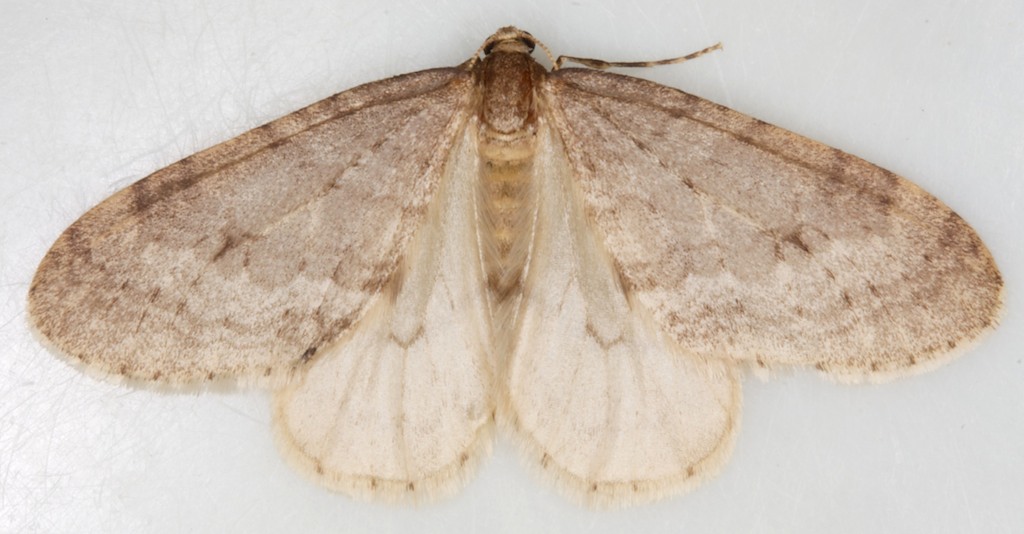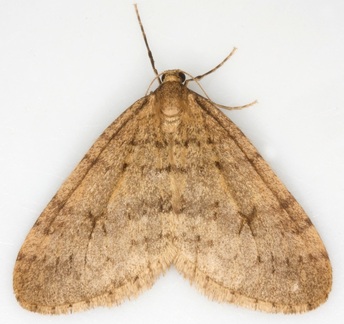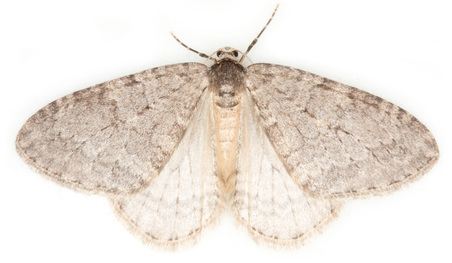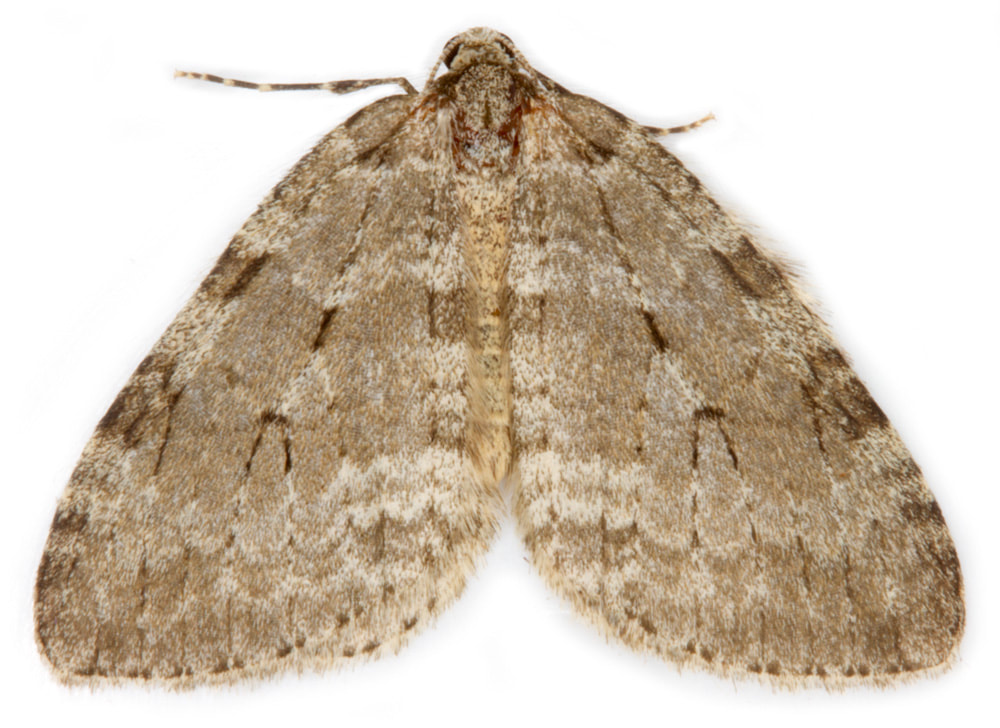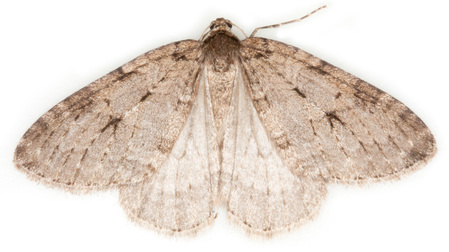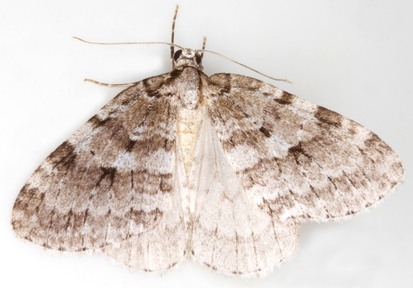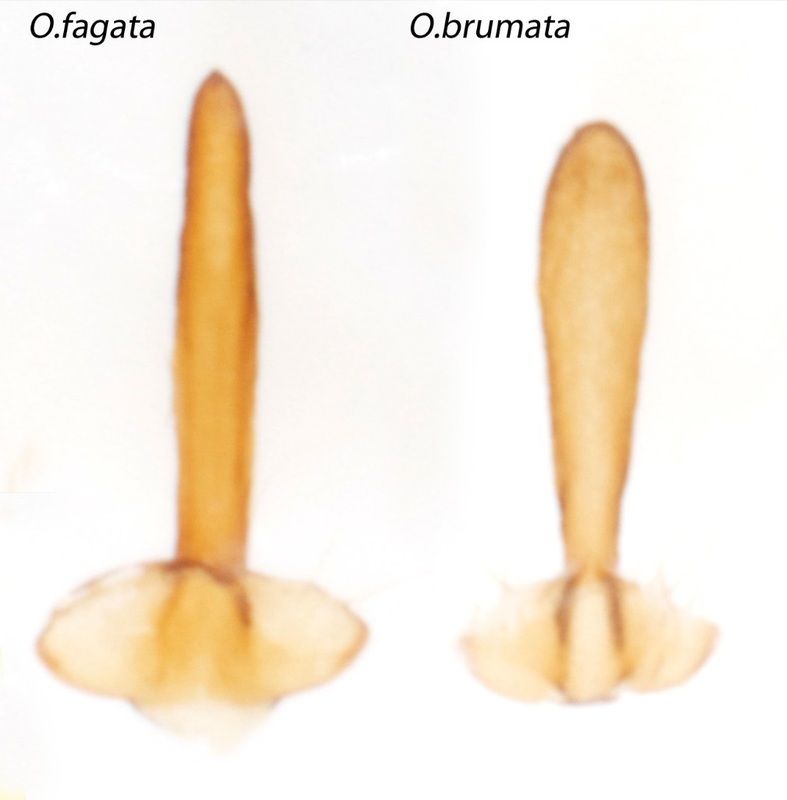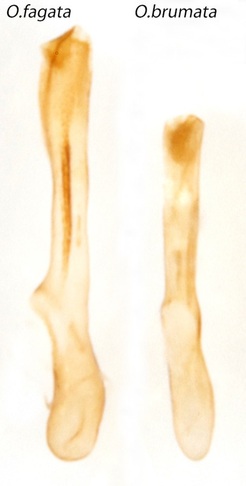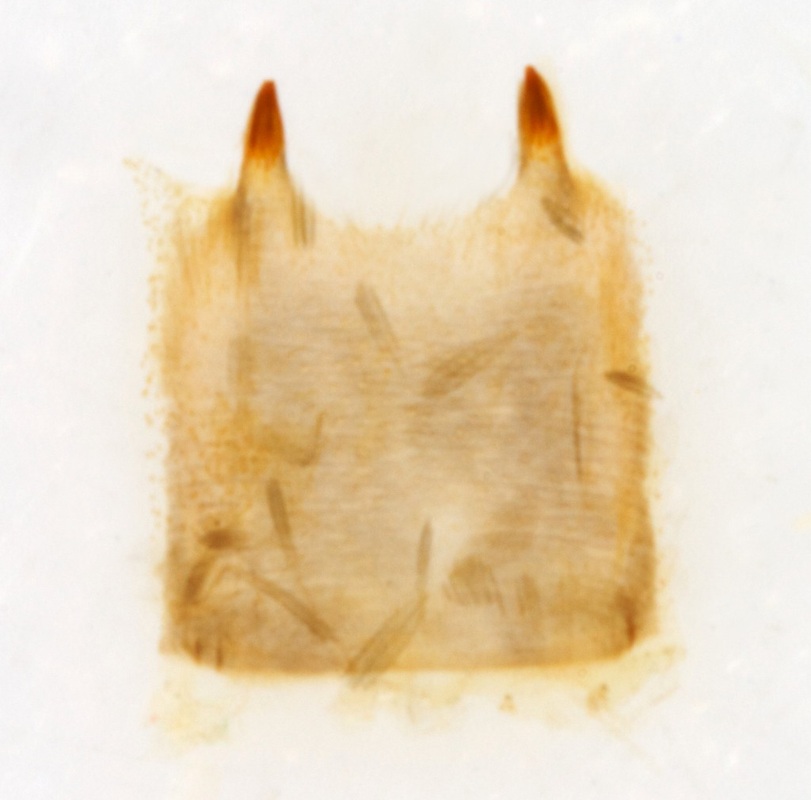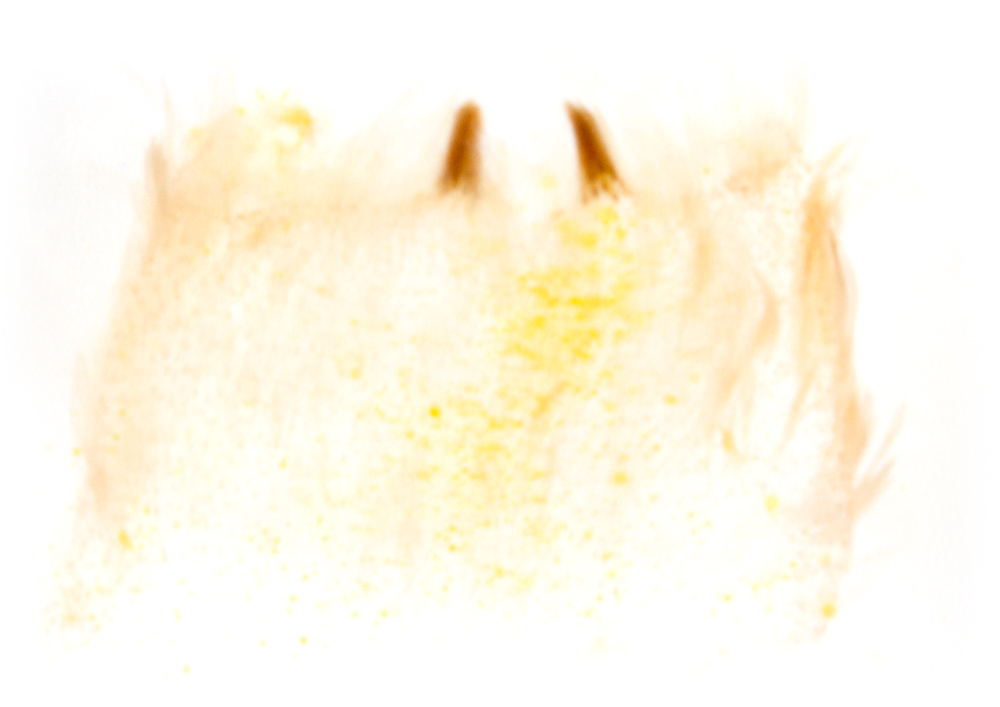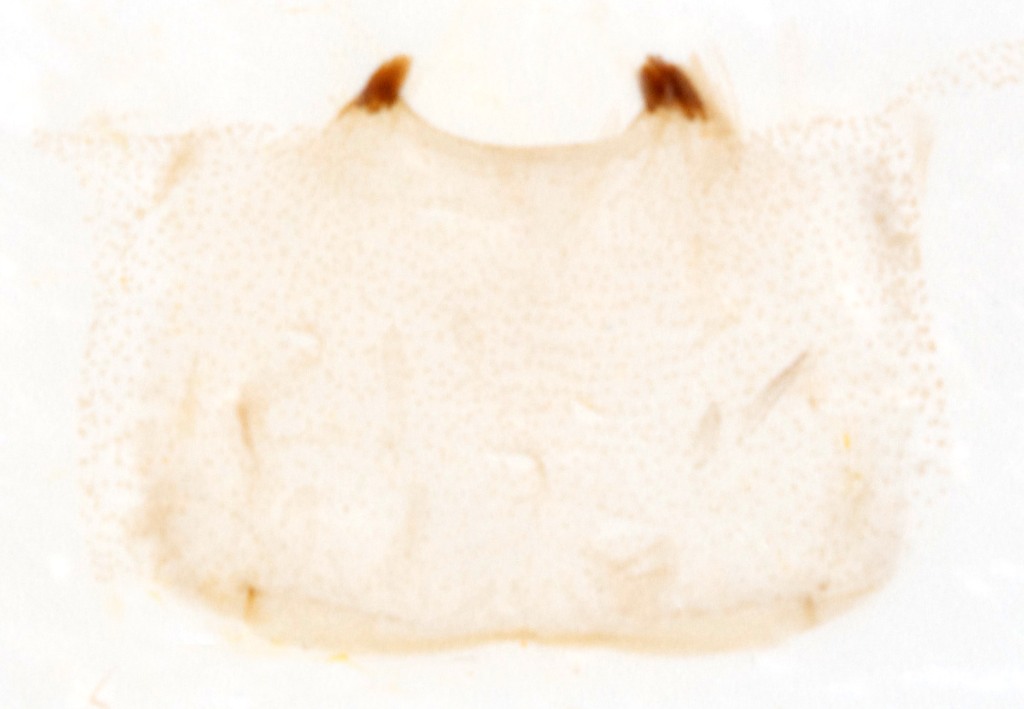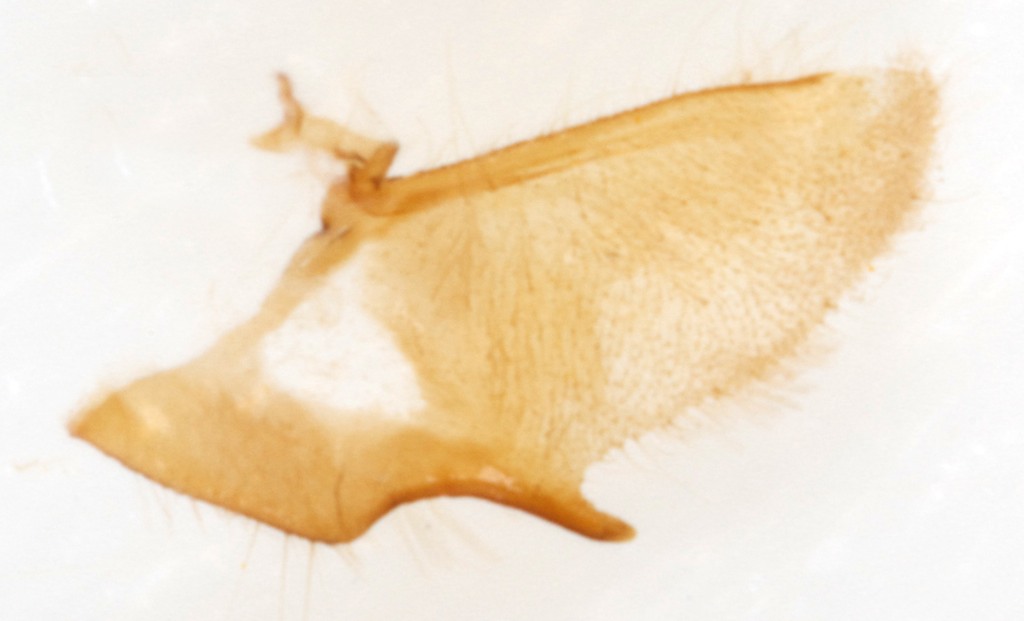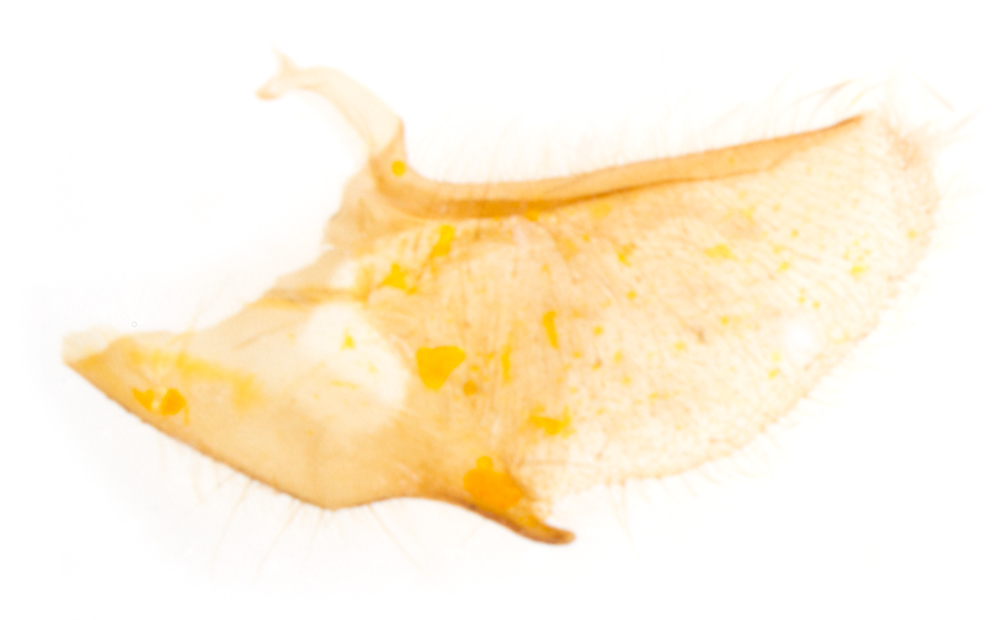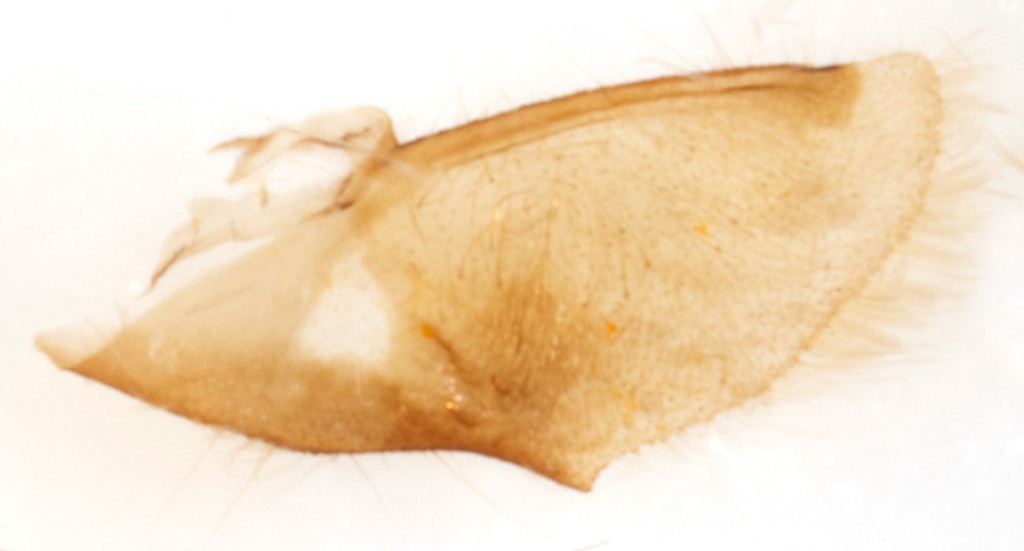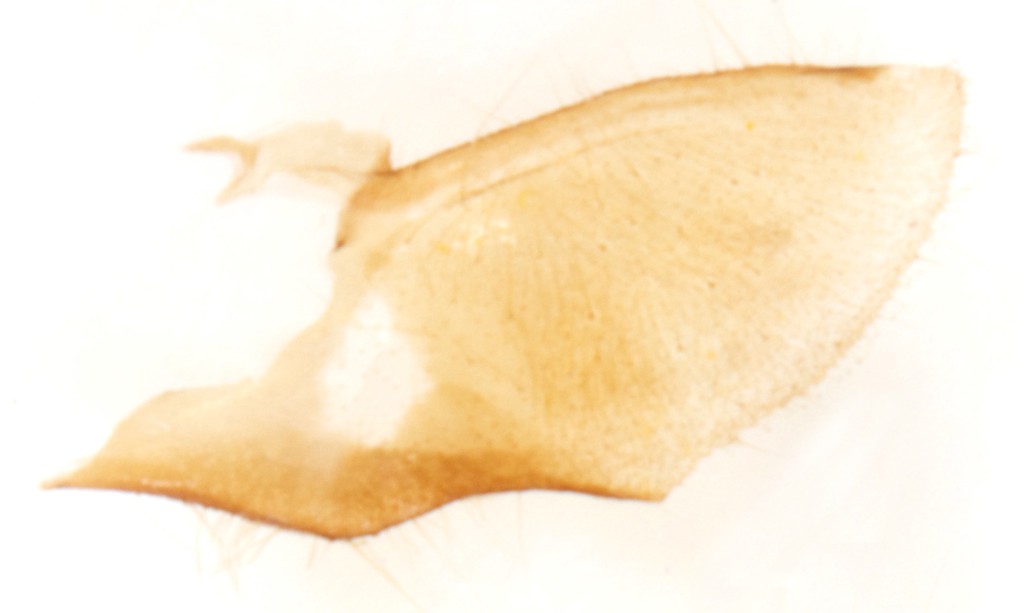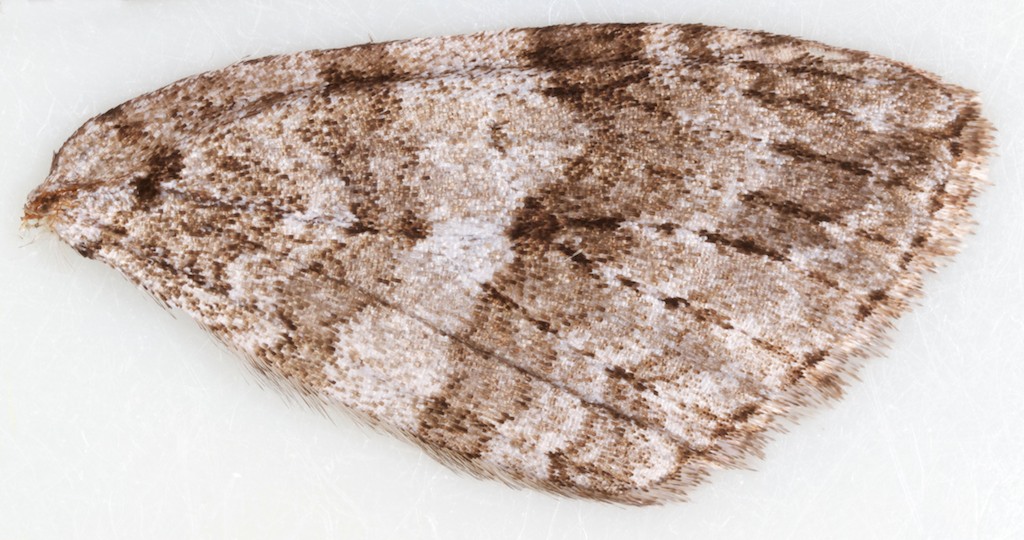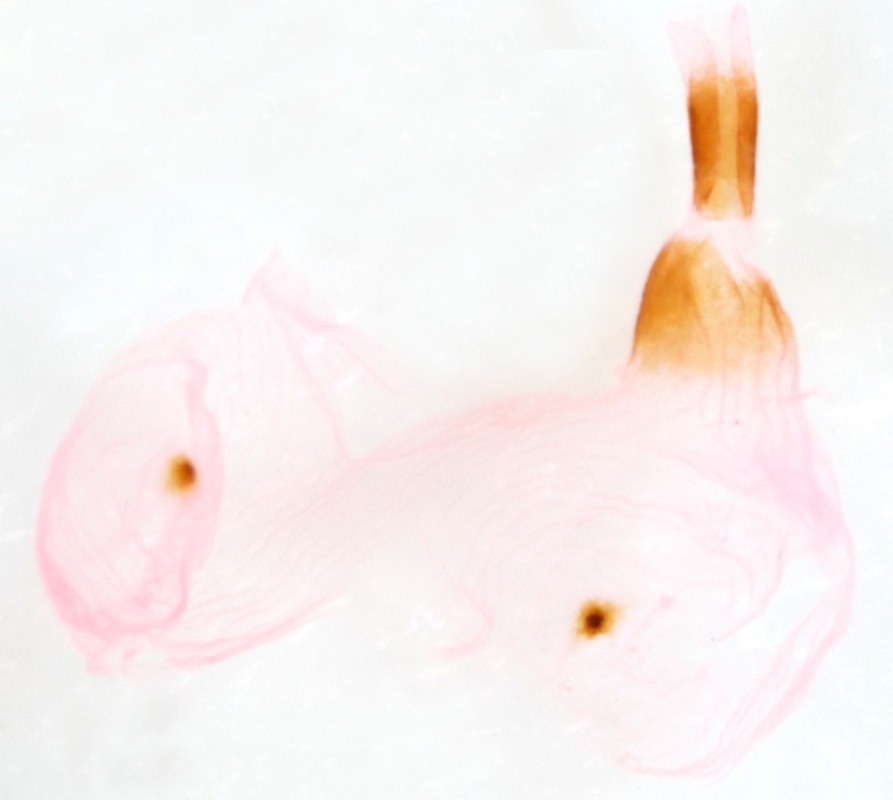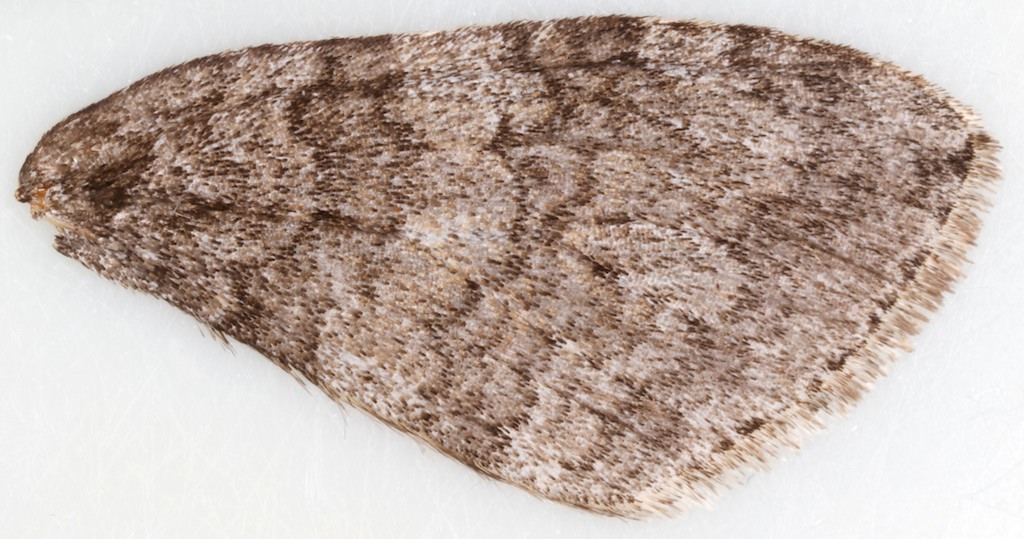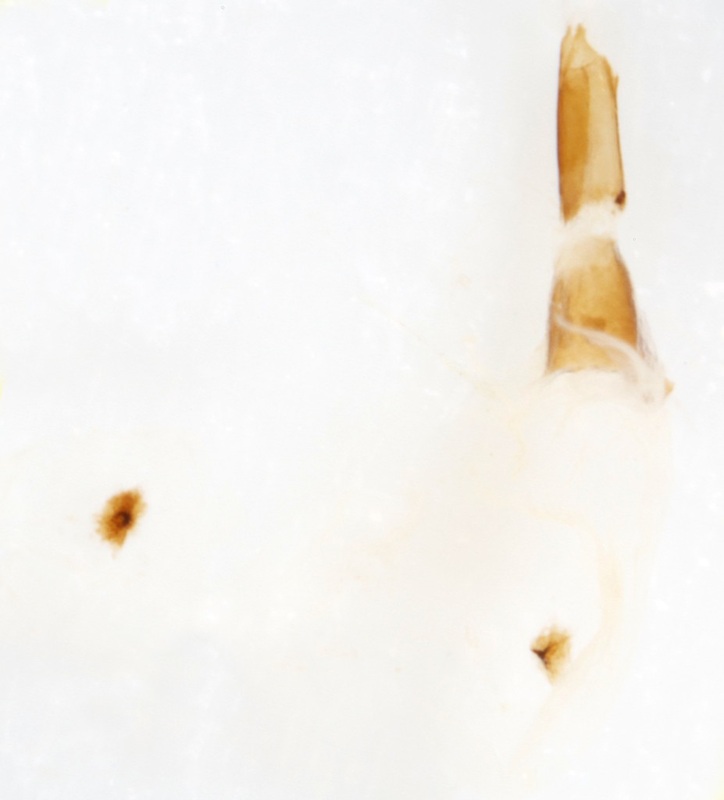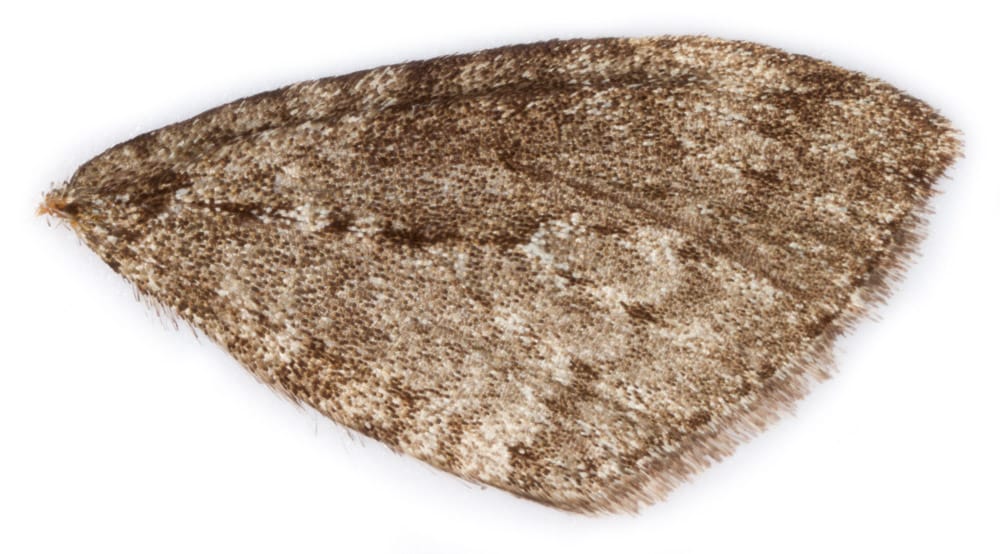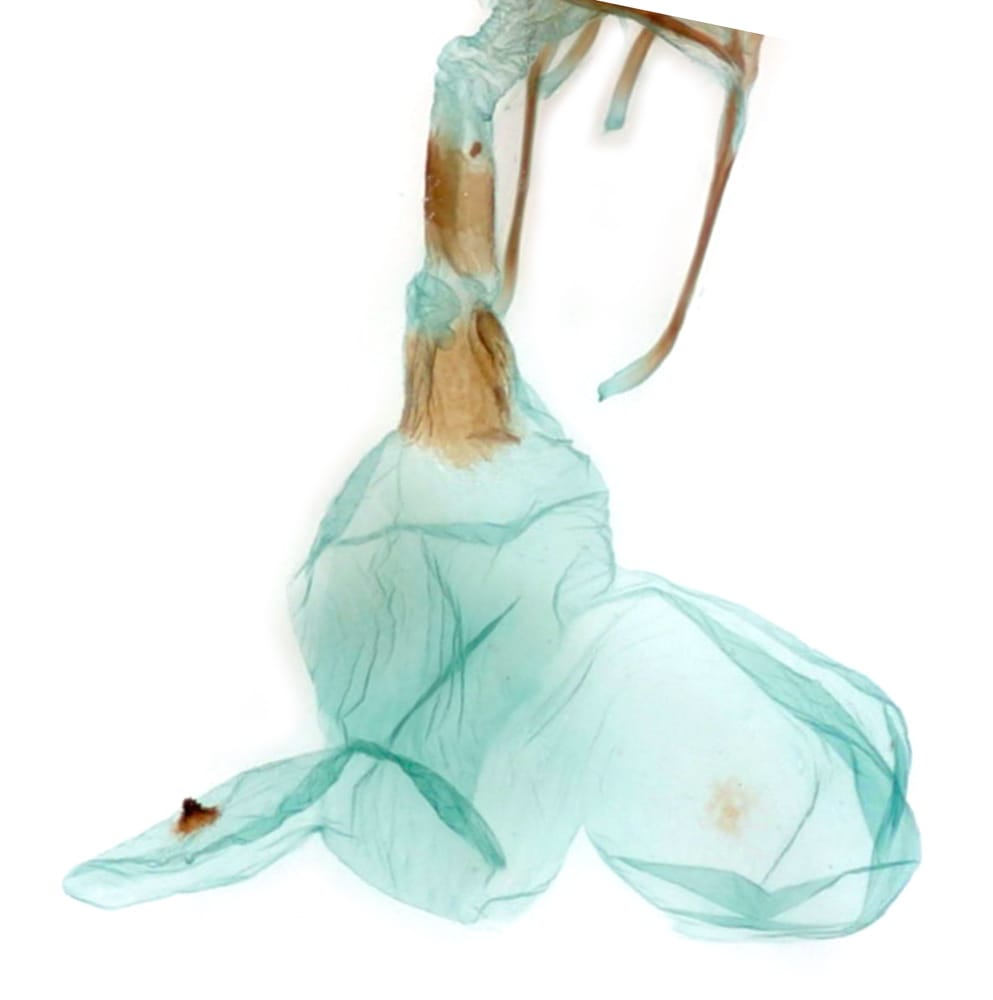Tribe: Operophterini (2G 6S)
The two Operophtera species ('Winter Moths') have a more rounded forewing apex than the four Epirrita species ('November Moths').
Male O.brumata is browner than the other species which are predominantly grey. Female Operophtera have rudimentary wings and are flightless while female Epirrita are fully-winged. Epirrita species cannot be reliably identified to species on external appearance, though specimens found in northern moorland in August will be E.filigrammaria. Male Epirrita are separable on genital features but females are not and so may not be confidently identified to species.
In the male genitalia the Operophterini have a paired centrally fused structure known as 'labides' (Pierce). Pierce distinguishes the labides as arising from the junction of the transtilla and costa. The labides of Epirrita species have a central projecting 'head' while that of Operophtera species shows no central projection looking more like a hood.
Male O.brumata is browner than the other species which are predominantly grey. Female Operophtera have rudimentary wings and are flightless while female Epirrita are fully-winged. Epirrita species cannot be reliably identified to species on external appearance, though specimens found in northern moorland in August will be E.filigrammaria. Male Epirrita are separable on genital features but females are not and so may not be confidently identified to species.
In the male genitalia the Operophterini have a paired centrally fused structure known as 'labides' (Pierce). Pierce distinguishes the labides as arising from the junction of the transtilla and costa. The labides of Epirrita species have a central projecting 'head' while that of Operophtera species shows no central projection looking more like a hood.
Operophtera (2S)
The two species are similar but O.brumata tends to be darker and smaller. The hindwing is whitish in O.fagata, brownish in O.brumata. In the male genitalia: 1 - the uncus is more parallel-sided, more slender and with a small apical point in O.fagata; more spatulate and with an evenly rounded apex in O.brumata; 2 - the anterior portion of the juxta is fuller with a much smaller basal indentation in O.fagata; 3 - the aedeagus has a stronger, more obvious cornutus in O.fagata. See Male Genitalia below.
The two species are similar but O.brumata tends to be darker and smaller. The hindwing is whitish in O.fagata, brownish in O.brumata. In the male genitalia: 1 - the uncus is more parallel-sided, more slender and with a small apical point in O.fagata; more spatulate and with an evenly rounded apex in O.brumata; 2 - the anterior portion of the juxta is fuller with a much smaller basal indentation in O.fagata; 3 - the aedeagus has a stronger, more obvious cornutus in O.fagata. See Male Genitalia below.
Epirrita (4S)
Although Epirrita species cannot be identified with certainty on external characters there are tendencies which form a guide to identification (Difficult species guide) . In E.dilutata the post-median line tends to run close to or through the discal spot when it is present; in E.christyi the postmedian line tends to curve around the discal spot and in E.autumnata the line tends to be angulated around the spot. However the discal spot is often absent and the forewing may be obscurely marked. It seems likely (to me) that females will follow the same trends in wing markings
as males but, since they cannot be reliably identified using genital features, this cannot be confirmed.
Although Epirrita species cannot be identified with certainty on external characters there are tendencies which form a guide to identification (Difficult species guide) . In E.dilutata the post-median line tends to run close to or through the discal spot when it is present; in E.christyi the postmedian line tends to curve around the discal spot and in E.autumnata the line tends to be angulated around the spot. However the discal spot is often absent and the forewing may be obscurely marked. It seems likely (to me) that females will follow the same trends in wing markings
as males but, since they cannot be reliably identified using genital features, this cannot be confirmed.
Male Genitalia - O.fagata vs O.brumata
Male 8th sternites (S8 ventral plate / 'Octavals') - Epirrita species
E.diluatata - long, widely-spaced; E.christyi - long, closely spaced; E.autumnata/filigrammaria - short, widely-spaced, inclined medially.
The Difficult Species Guide suggests that there is no useful distinction between the octavals of E.autumnata and E.filigrammaria.
Pierce states that the octavals of E.autumnata are smaller with a shallower excavation between them than E.filigrammaria.
E.diluatata - long, widely-spaced; E.christyi - long, closely spaced; E.autumnata/filigrammaria - short, widely-spaced, inclined medially.
The Difficult Species Guide suggests that there is no useful distinction between the octavals of E.autumnata and E.filigrammaria.
Pierce states that the octavals of E.autumnata are smaller with a shallower excavation between them than E.filigrammaria.
Valvae - Epirrita species
E.dilutata/christyi - dentate process on ventral margin; E.autumnata/filigrammaria - angular projection but no dentate process.
The dentate process is more curved in E.christyi than in E.dilutata.
Neither the Difficult Species Guide nor Pierce suggest any difference between E.autumnata and E.filigrammaria.
E.dilutata/christyi - dentate process on ventral margin; E.autumnata/filigrammaria - angular projection but no dentate process.
The dentate process is more curved in E.christyi than in E.dilutata.
Neither the Difficult Species Guide nor Pierce suggest any difference between E.autumnata and E.filigrammaria.
Cristae - not illustrated here but see E.filigrammaria
Pierce characterises a crista as a 'pad covered with hairs or scales' on either side of the juxta and states that each bears ~19 hairs in E.autumnata and ~7 hairs in E.filigrammaria and that this provides a clear separation between the two species.
Pierce characterises a crista as a 'pad covered with hairs or scales' on either side of the juxta and states that each bears ~19 hairs in E.autumnata and ~7 hairs in E.filigrammaria and that this provides a clear separation between the two species.
Female Genitalia - Epirrita species
Differences in the female genitalia are not described by Waring. All except E.christyi are shown at Moth Dissection. Pierce gives some description but this is not very helpful and probably unreliable. Each species has 2 signa in the bursa copulatrix. Those of E.dilutata and E.filigrammaria are "discoid, scobinate"; those of E.christyi "small"; and those of E.autumnata "distinctly smaller". Difficult Species Guide states that females cannot be reliably identified using genital features.
Differences in the female genitalia are not described by Waring. All except E.christyi are shown at Moth Dissection. Pierce gives some description but this is not very helpful and probably unreliable. Each species has 2 signa in the bursa copulatrix. Those of E.dilutata and E.filigrammaria are "discoid, scobinate"; those of E.christyi "small"; and those of E.autumnata "distinctly smaller". Difficult Species Guide states that females cannot be reliably identified using genital features.
